A brief history
Aerodynamics and motorcycle racing have had a patchy relationship over the last seventy years. Whilst Formula 1, and subsequently most forms of four-wheel racing, went all-in during the 1970s, it has remained on the periphery for bikes until comparatively recently.
That’s not to say that aerodynamics hasn't been important or thought about, more that it was limited in its application. This vintage advert from 1965 below shows how aerodynamic road bike fairings were used for performance and rider comfort on Royal Enfields.

In 1950s racing, the dustbin fairing was used to reduce drag for performance until banned on safety grounds. Doubts were raised about crosswind stability, especially at events like the Isle of Man TT, where weather conditions can significantly affect the race. Even today, fairings are often drilled in particularly windy conditions for this reason.

Racing bikes continued to develop fairings and work on rider positioning to reduce drag within the regulations, but this was more or less the scope of aerodynamic development for many years. That has changed recently, as competition and technology have driven teams to look for performance gains into areas other than just drag reduction.
Drag and slipstreaming
To start with, let's discuss drag as it has been an ever-present consideration in motorcycle performance, both in racing and on the road. Increasing top speed almost always guarantees performance, which is why reducing drag is so important.
MotoGP engine development is one of the key battlefields in the quest for race wins and millions of dollars are spent extracting horsepower. That investment is of no use if power gains are wasted in aerodynamic losses. Compared to braking or cornering, it’s also generally slightly easier to extract lap time from a top speed increase. Throttle open, hold on!
Unlike a car, particularly closed cockpit racers, bikes have multiple exposed elements. These include the front wheels and forks, fairing edges, cooling air exiting from the radiator, the rider, exhausts and swing arm. The resulting airflow is highly turbulent, with multiple separations and reversed flow that add to the pressure drag force that has to be overcome by engine power.

This means that, whilst considerably smaller in frontal area than a car, a bike’s drag coefficient is much higher. The net result is a similar drag level to a car, despite a bike's smaller size. With generally less engine power available, this equates to a top speed performance deficit for bikes, but also means that more performance can be extracted by reducing drag.
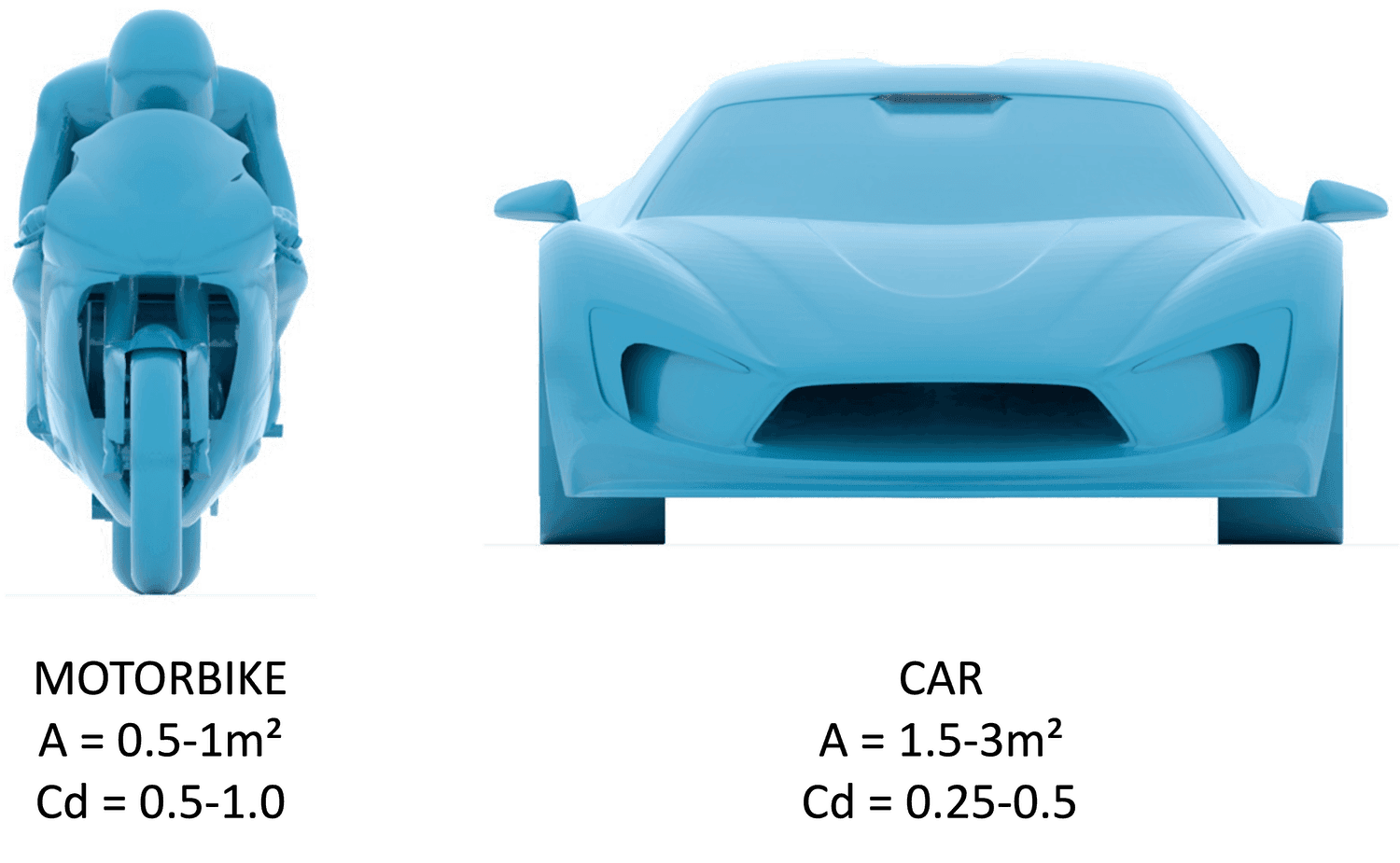
The other, perhaps less obvious, factor driving drag reduction is the desire to reduce the size of the wake a bike produces. This “hole in the air” gives an advantage to following bikes, giving them a useful speed increase to help overtaking. This is of particular interest in Moto2 and Moto3 where more common bike parts mean that small differences can have a large effect. Brian Gillen from MV Agusta discusses this with AirShaper in this video.
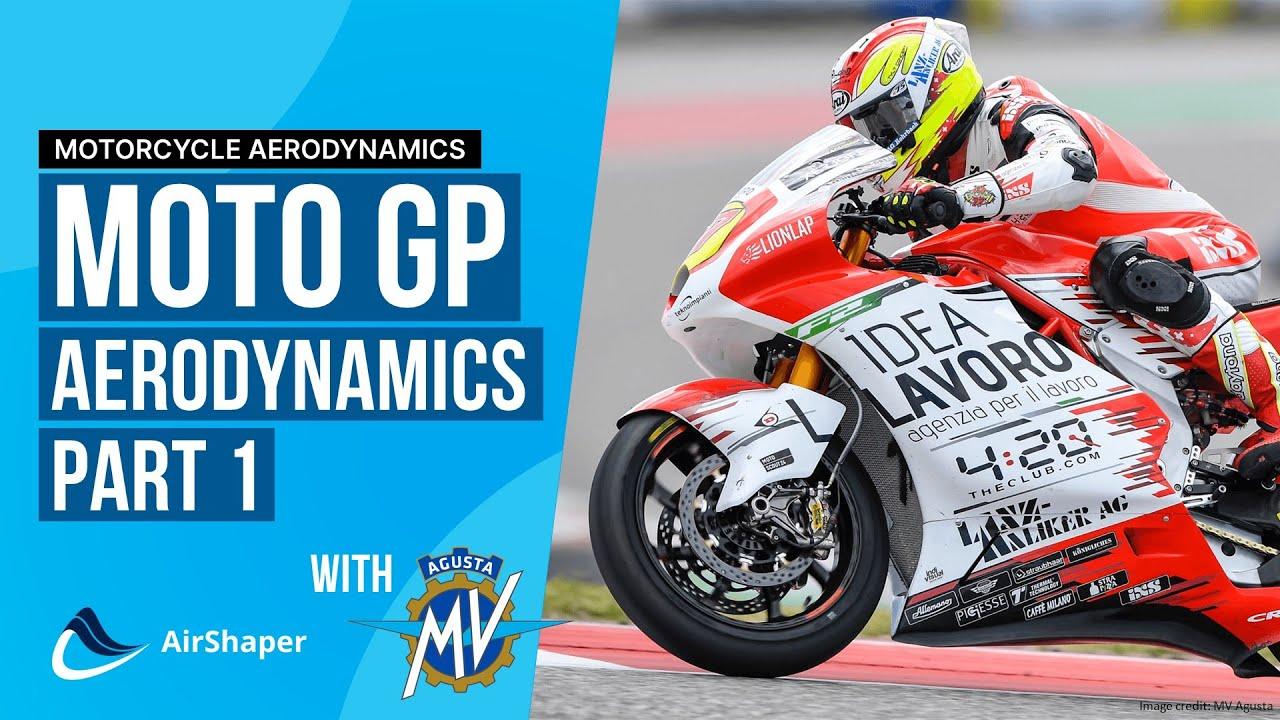
Race Talk with MV Agusta - Top Aerodynamic Priorities for MotoGP bikes
The importance of the rider
The other defining feature of a motorcycle is the exposed rider and how much they move around. From a drag point of view, optimising rider position whilst on the straight is key to managing drag and the resulting wakes.
Teams analyse body, arm and leg positioning as well as the hump on the back of riders’ leathers, the evolution of which is discussed in this article by Dainese. Small positional changes to foot pegs and even the angle of a rider’s feet can make a big difference.
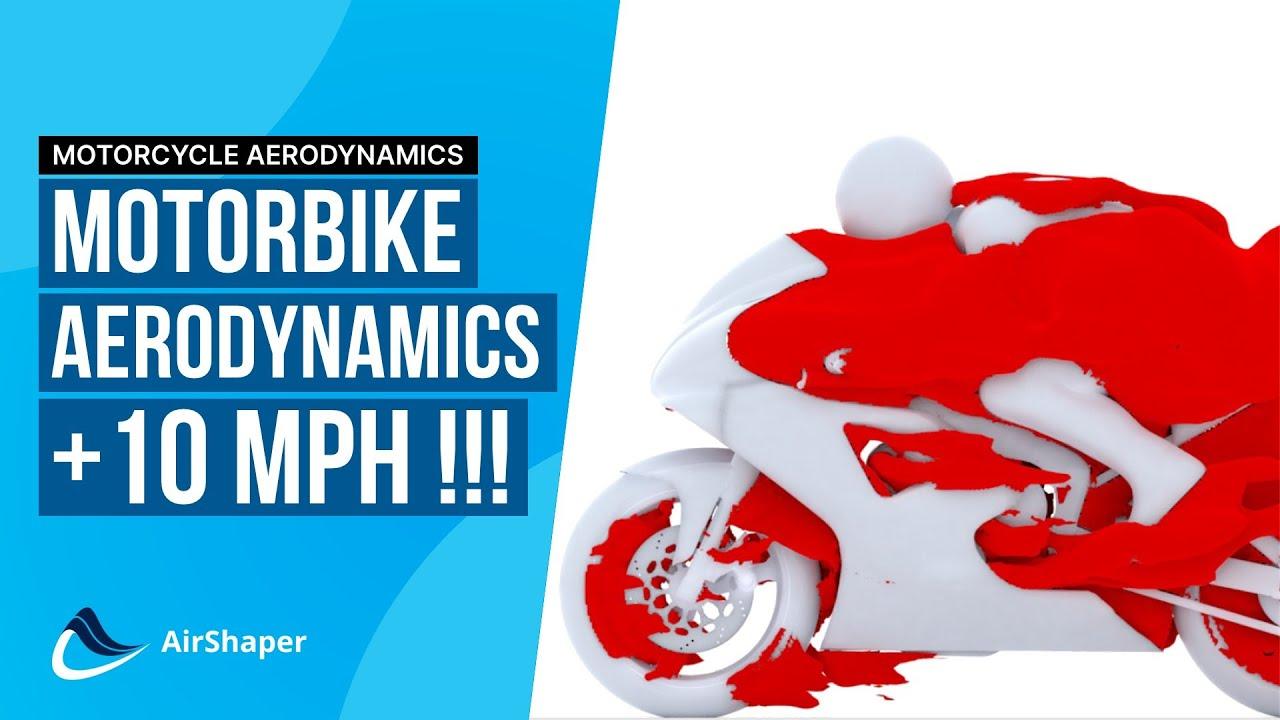
Find out how rider posture can increase top speed by 10mph
Rider comfort, probably better described as rider stability, can’t be ignored either. In the unsteady flow regimes that exist on a motorcycle, it is desirable to control the way in which flow detaches from the fairing and the rider’s helmet. If this flow is poorly controlled, it can result in unwanted forces on the rider’s body and head that will affect human performance, particularly over a race distance.
The rider can also be used as an aerodynamic aid. Moving out from behind the fairing changes the frontal area and drag coefficient of the bike dramatically. From a simplistic point of view, this increases the drag force and is why it has become a common sight to see riders hanging a leg out under braking.
Looking in more detail, the rider rarely moves in a way that is symmetrical, instead hanging off the bike to one side or the other. This means that the centre of pressure of drag on the bike is no longer along the centreline, instead it is to one side; generating a yaw moment. Harnessing this can be used to help the bike turn-in and corner.
Keeping the wheels on the ground
Moving away from drag in a top speed sense, brings us to one of the dominant features of motorcycle performance: the wheelie. For a long time, controlling this has been the domain of mechanical design, set-up and electronics. But why is it such a problem?
It all comes down to the relative positions of the centre of gravity and centre of aerodynamic pressure of a motorcycle compared to a car. This is illustrated in the image below where Lewis Hamilton and Valentino Rossi swapped machinery in 2019.
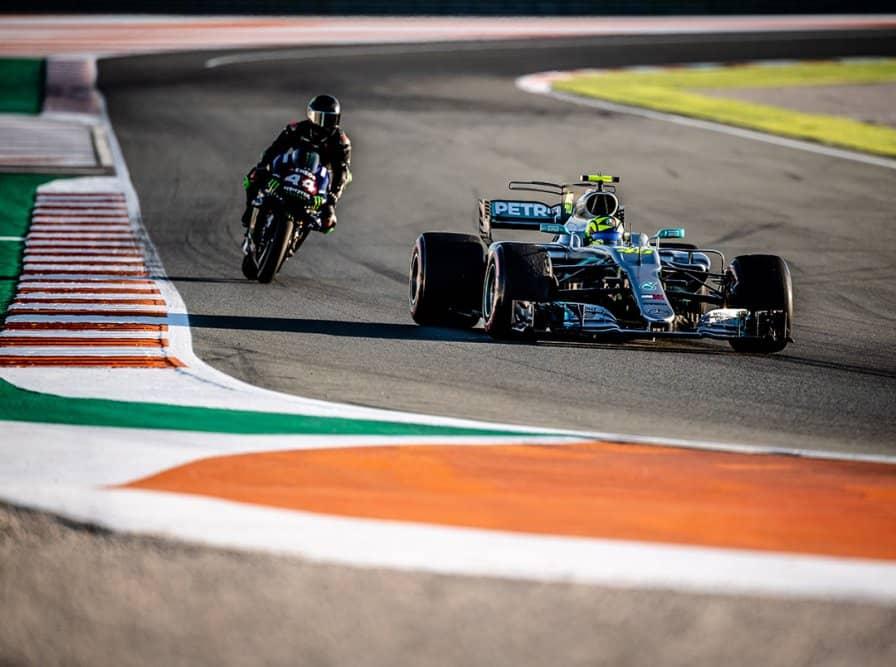
The centre of gravity for the MotoGP bike is much higher than the Formula 1 car. This is coupled with a very short wheelbase (around 1.5m for the bike compared to 3.5m for the car) and a low overall weight (around 210kg for the bike and rider compared to 752kg for car and driver). This makes the vertical loads going through the bike’s tyres very sensitive to acceleration and drag.

A little maths shows the result of these differences. Ignoring aerodynamic drag and downforce, the load transfer off the front axle onto the rear due to acceleration is given by the formula below:
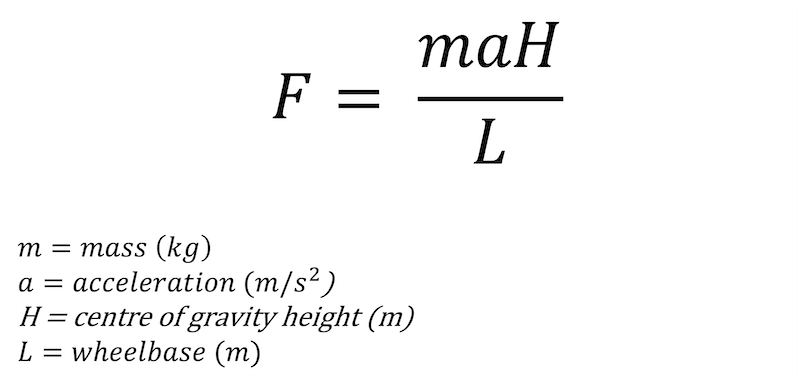
If we assume the weight is split 50/50 between front and rear axle, we can work out the starting load on each axle for the bike (1030N) and car (3687N). Estimating some values for car and bike dimensions gives the table below. As you can see, at only 0.5g acceleration, (where g is the acceleration due to gravity and is equal 9.807 m/s²) the bike transfers from front to rear over 50% of the static axle load available (549N out of 1030N), whilst the car transfers less than 10% (316N out of 3687N).

Add in the effect of drag and the load transfer increases further. It takes very little to reduce the front axle load on the bike to near zero, the wheelie. As the front axle loses load, the steering becomes less effective and the front cornering grip reduces considerably, as discussed in this video.
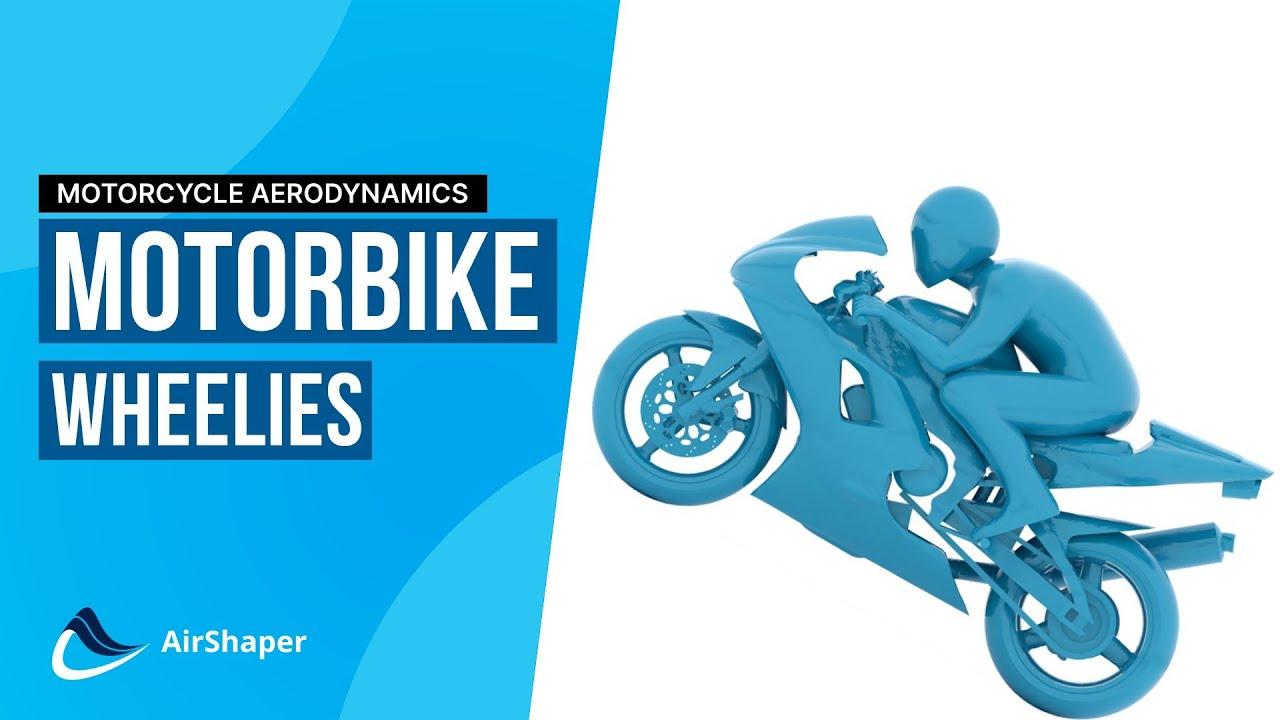
Motorbike wheelies
The same problems affect an F1 car to some extent, but really are not an issue at high speeds. The loads on the axles are so high from the additional aerodynamic load that the reduction is barely noticed. This is starting to be addressed on MotoGP bikes in the same way.
Arguably, Ducati have been at the forefront of much of this as they have looked to take on the dominance of Honda and Marc Marquez. For the most part, this has been in the form of front fairing winglets which attempt to add load to the front axle to combat load transfer. The rise of these winglets over the last few seasons has been a hot topic of conversation and a controversial one at that.

The complexity of the movement of a bike means that these types of development are not always just gains. As a bike leans into a corner, the aerodynamic surfaces become angled. As the lean increases, the proportion of downforce that is acting normal to the track decreases. Instead, the downforce-producing elements are generating a side force pulling the bike out of the corner. This may lead to a requirement for the rider to hang off the bike more in corners, whilst keeping the chassis more vertical.
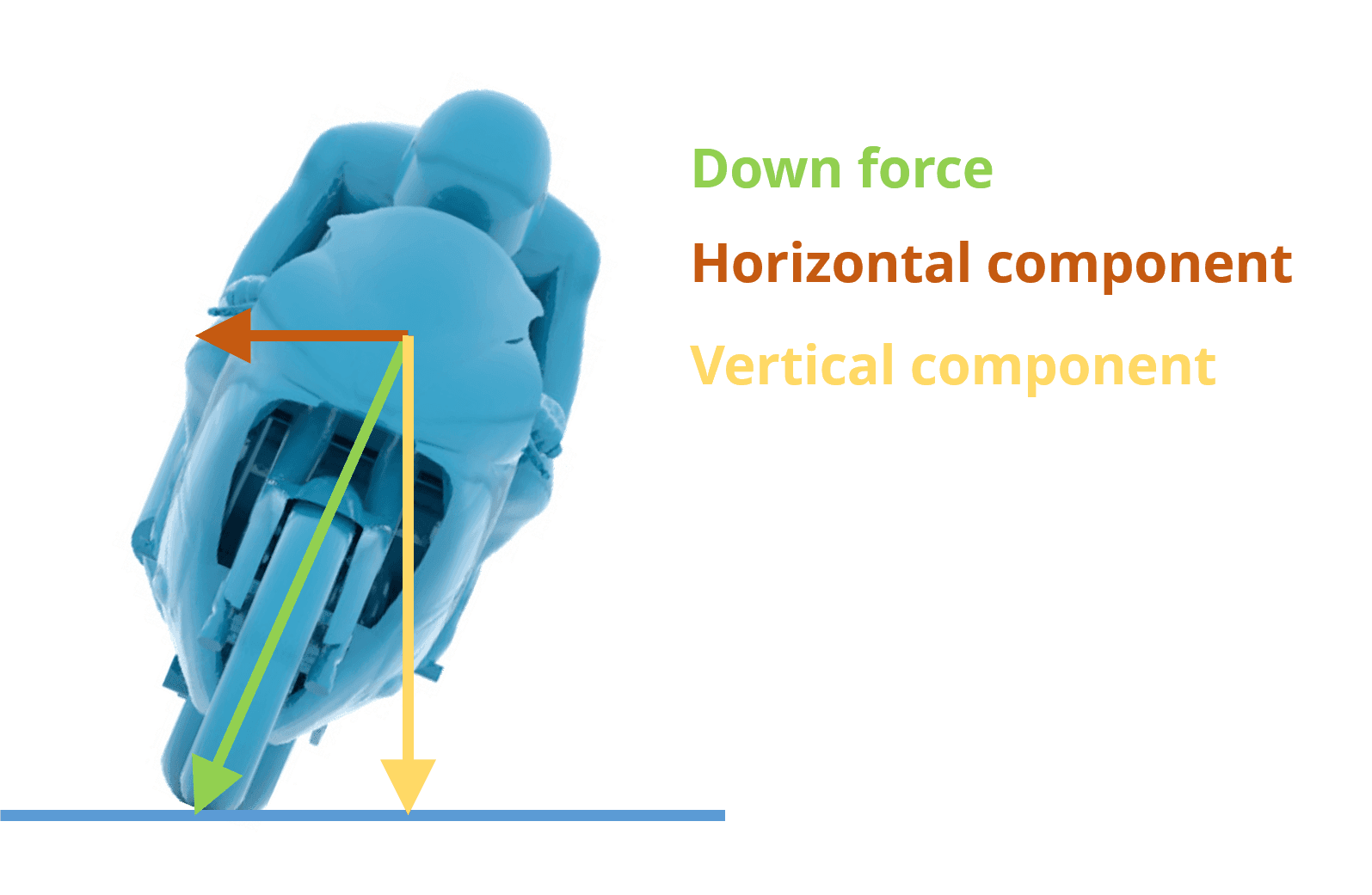
Cooling it all down
The final area of aerodynamic development has actually been around for a long time. The dustbin fairings mentioned above had various scoops added to them to allow the brakes to cool, supply air to the engine intakes and to keep the rider comfortable.
There is performance to be gained from engine cooling, reduced weight of components and controlling the drag by optimising the air flow into and around the radiator. The same goes for the ram air effect into the engine intake - more oxygen means more engine power.
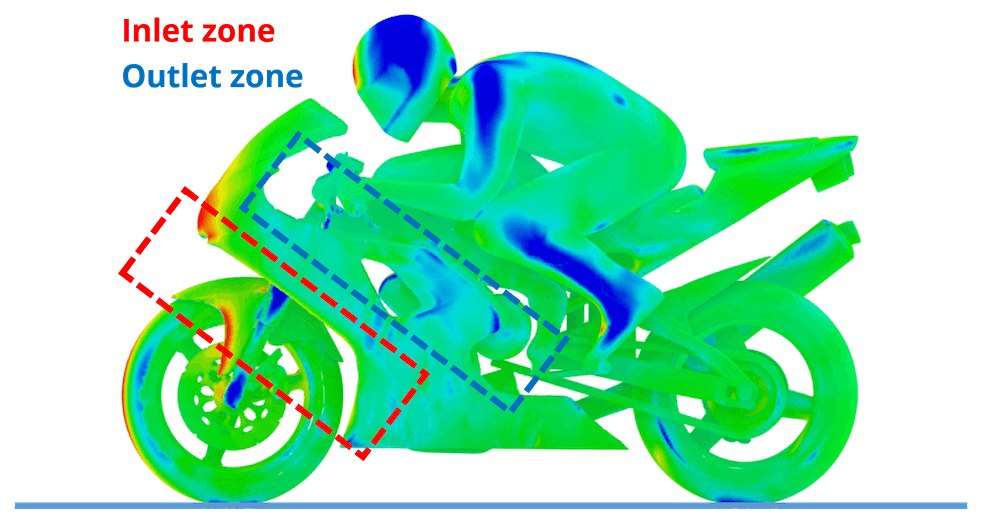
Manufacturers are always looking at the next big development. Aprilia recently published a patent which looked at reducing the effect of blockage on the flow to the radiator from the front wheel as it was turned. In doing this, the airflow to the radiators could be improved, particularly at low speeds when there was less airflow available in the first place. This may allow smaller or lighter coolers.
The future
Unless the FIM regulations step in to make changes, the role of aerodynamics is set to increase over the seasons ahead. Competition between manufacturers will always drive technology and the detail with which everything is scrutinised. As CFD and virtual prototyping capabilities continue to advance, development will follow. Much of that will come from improved software capabilities and processing, as discussed in this interview with MV Agusta.

Race Talk with MV Agusta - How to Improve Moto GP Aerodynamics
Winglets are just the start, wheel fairings have appeared on MotoGP bikes and various ducting solutions are being developed. As bikes lean, parts of the lower fairing and wheels get close to the ground, which perhaps opens the door to harnessing ground effect for performance purposes. As usual, these are shrouded in secrecy in a way that only motorsport can, but there is plenty of speculation as to their purpose.
- Is Ducati using ground effect to gain grip in MotoGP?
It will also drive development in road bikes. Fashion and engineering mean that future (and current) road bikes will start to feature the items that are racing today.
Interesting links:
The aerodynamic hump and its history
Lewis Hamilton and Valentino Rossi swap machinery
Revolutionary Aprilia MotoGP aero could influence future RSV4
Is Ducati using ground effect for more grip in MotoGP?
Interview with Edoardo Lenoci, Ducati Aerodynamic Development Manager.
Run Your Own Simulation
